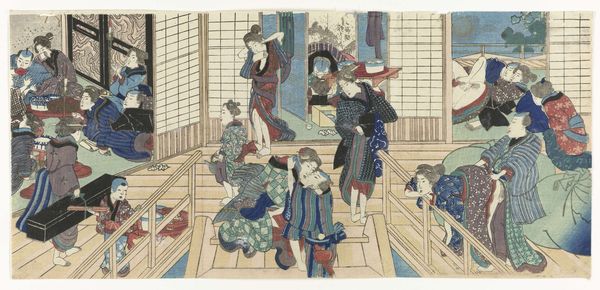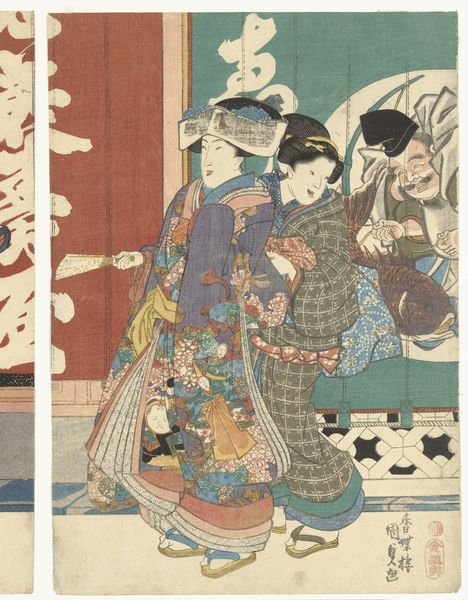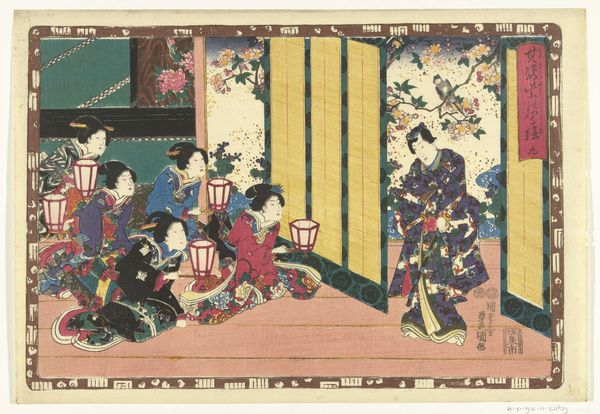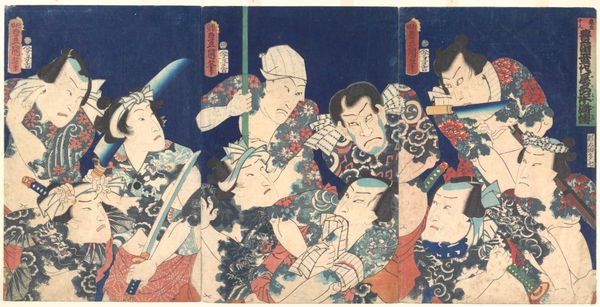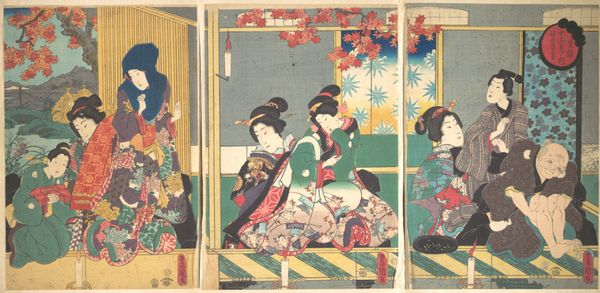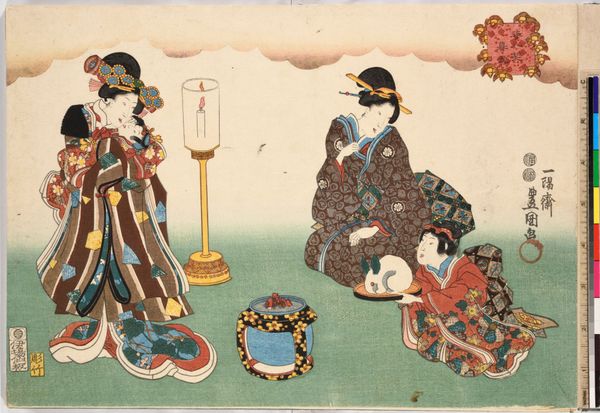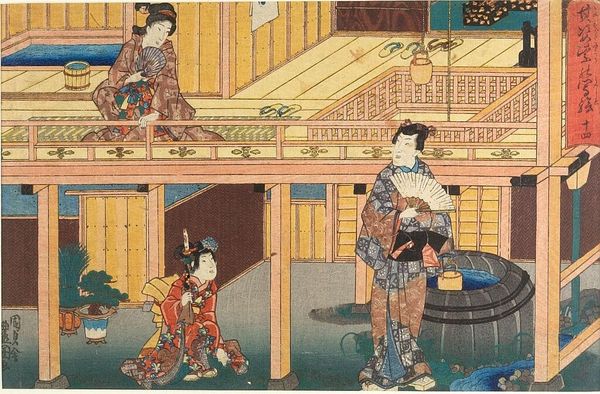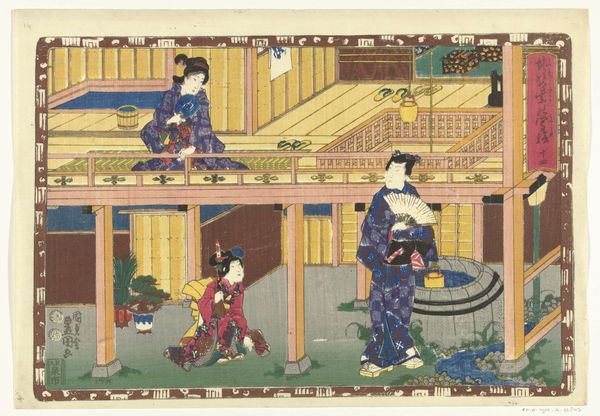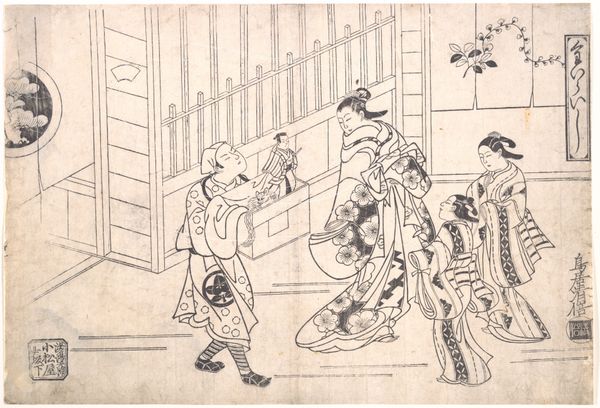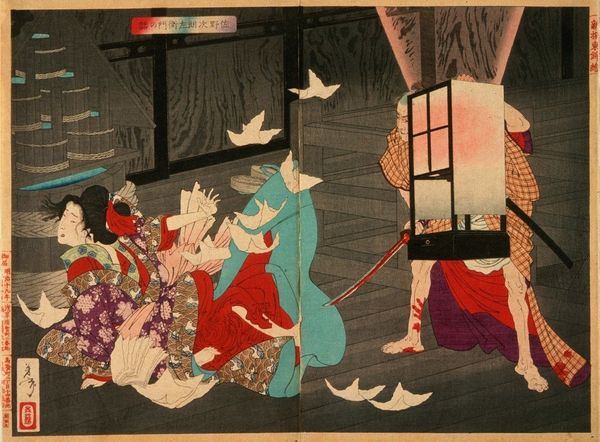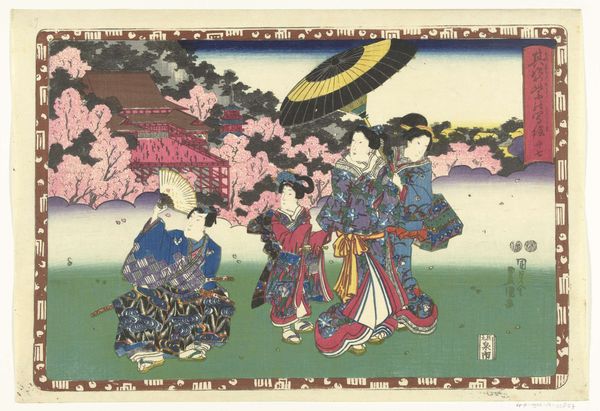
woodblock-print
#
asian-art
#
ukiyo-e
#
folk art
#
folk-art
#
woodblock-print
#
genre-painting
Copyright: Public Domain: Artvee
Curator: This woodblock print is entitled "January; Celebrating the New Year," created by Tsukioka Yoshitoshi around the 1860s. The scene depicts what appears to be a vibrant New Year celebration in Japan. Editor: Immediately, the figures' poses strike me. The women’s exaggerated gestures with their fans, coupled with the children straining forward, creates a dynamic, almost theatrical composition. The color palette too, is surprisingly vibrant, but grounded. Curator: The choice of the woodblock medium itself is crucial. It suggests the accessibility of art during the Edo period. The act of celebration wasn't exclusive, it was a community effort involving shared rituals and displays of joy that could be disseminated via prints like this. We must consider how the production and distribution of these images impacted societal values and shared cultural moments. Editor: Agreed, but let’s not lose sight of the inherent artistry. Notice how Yoshitoshi employs flattened perspectives, typical of Ukiyo-e, yet there’s a depth achieved through layered patterns in the kimonos and receding architecture. It establishes both foreground and background simultaneously, creating an intricate visual puzzle. Curator: True. And if we analyze the imagery, it becomes clear that certain materials, like the fine paper and specific pigments used, were likely obtained and consumed through a complex network of merchants and artisans. These goods become vital evidence of social status, as we witness the material manifestation of New Year’s wealth through the colorful patterns, ornate accessories, and festive mood captured here. Editor: The interplay between light and shadow is cleverly executed. Even though the lighting seems soft, there's a discernible direction that gives form to the figures and architectural details. It's more than just documentation, the skillful carving and printing heightens the viewing experience. Curator: Precisely. Examining similar works, we find a recurring interest in celebrating annual cycles, reflecting an agrarian society's dependency on and interaction with the environment. By studying how this particular work aligns with or diverges from these common themes, we unveil deeper understandings of 19th century Japanese folk life. Editor: Overall, Yoshitoshi transformed a mundane subject into a beautiful display of skill and sensibility. We are left pondering not just what is depicted but also how the artistry captivates our gaze. Curator: Indeed. A single image becomes an entry point into understanding both the aesthetic values and social complexities of the era.
Comments
No comments
Be the first to comment and join the conversation on the ultimate creative platform.

